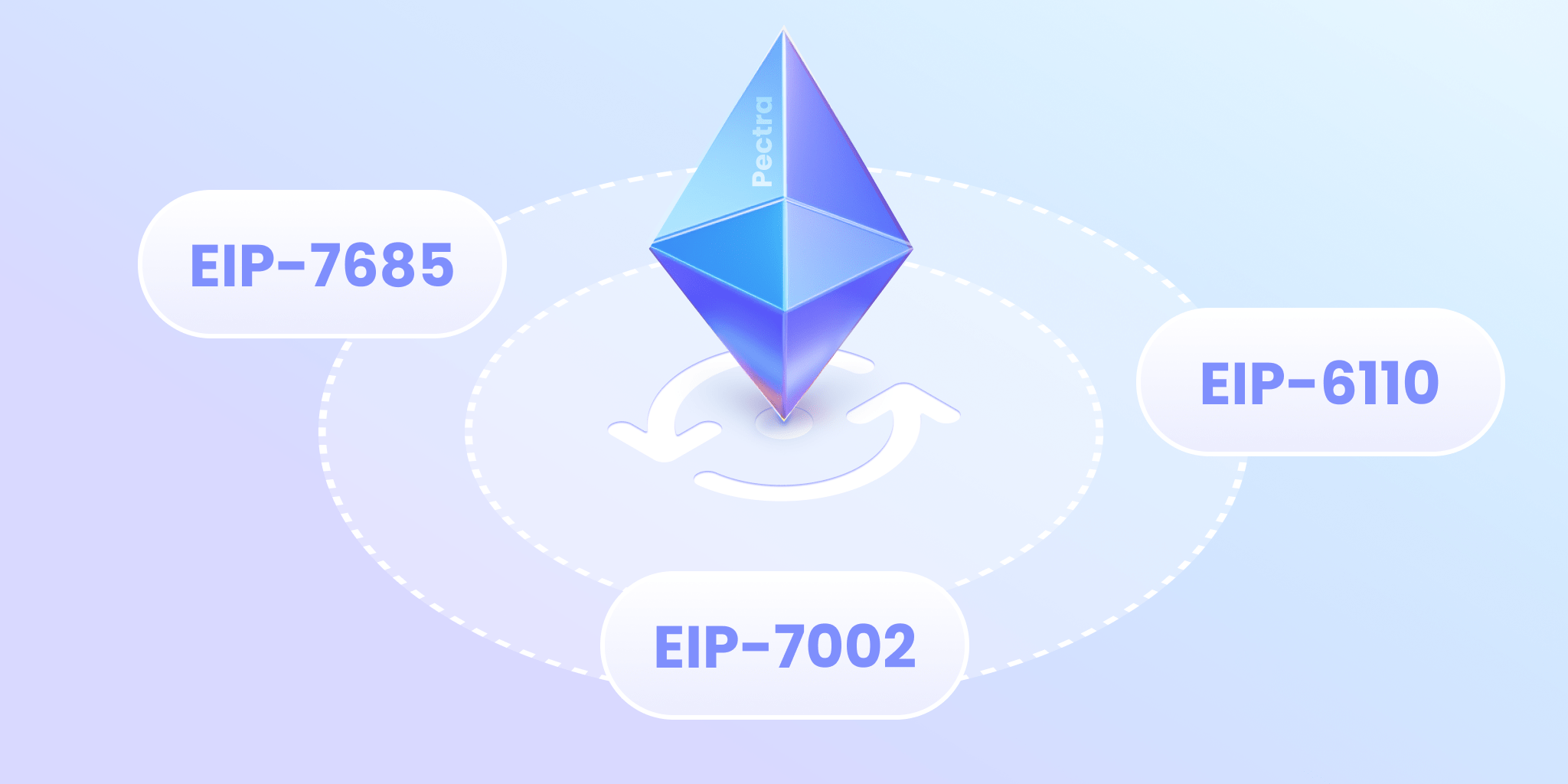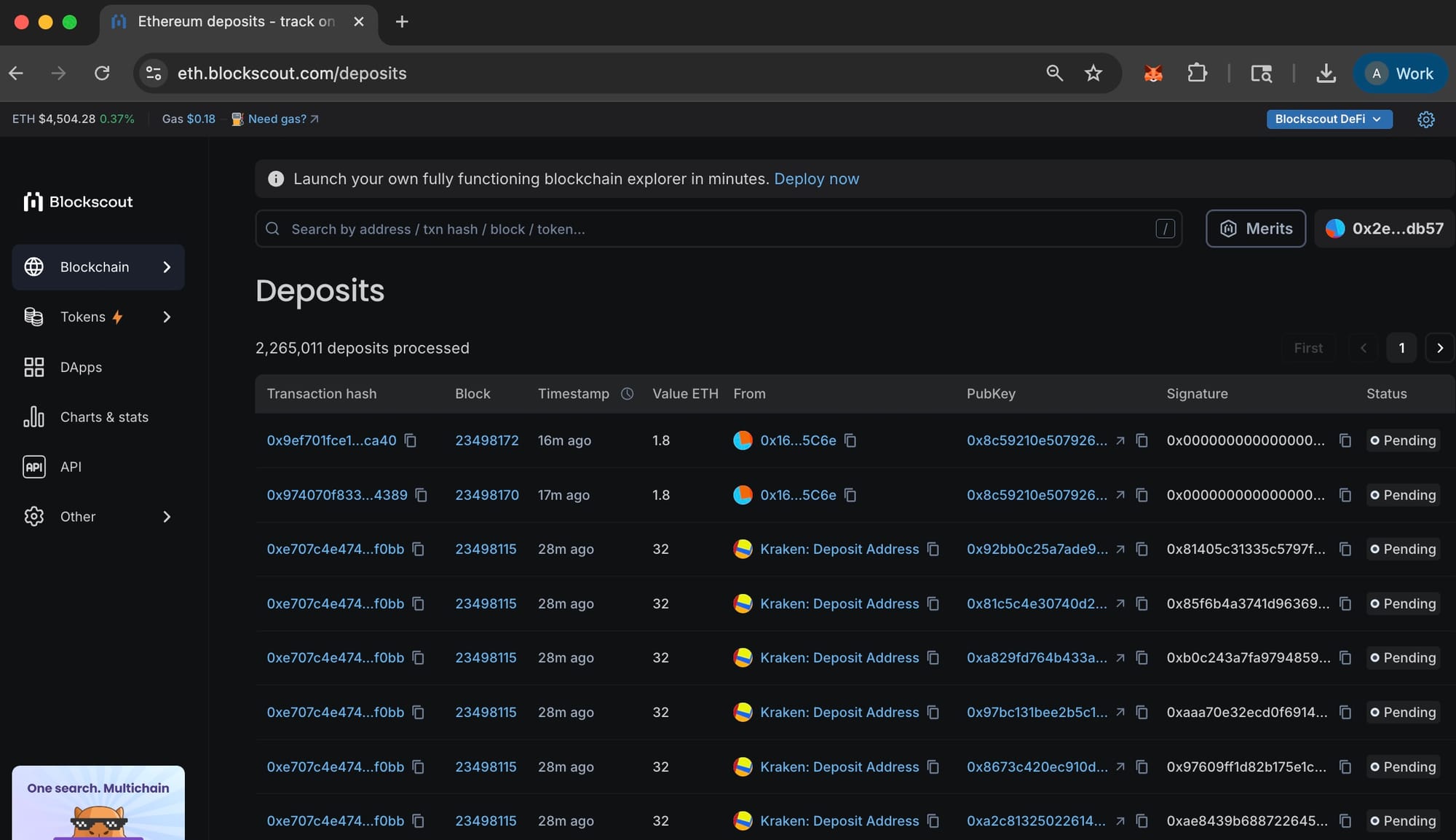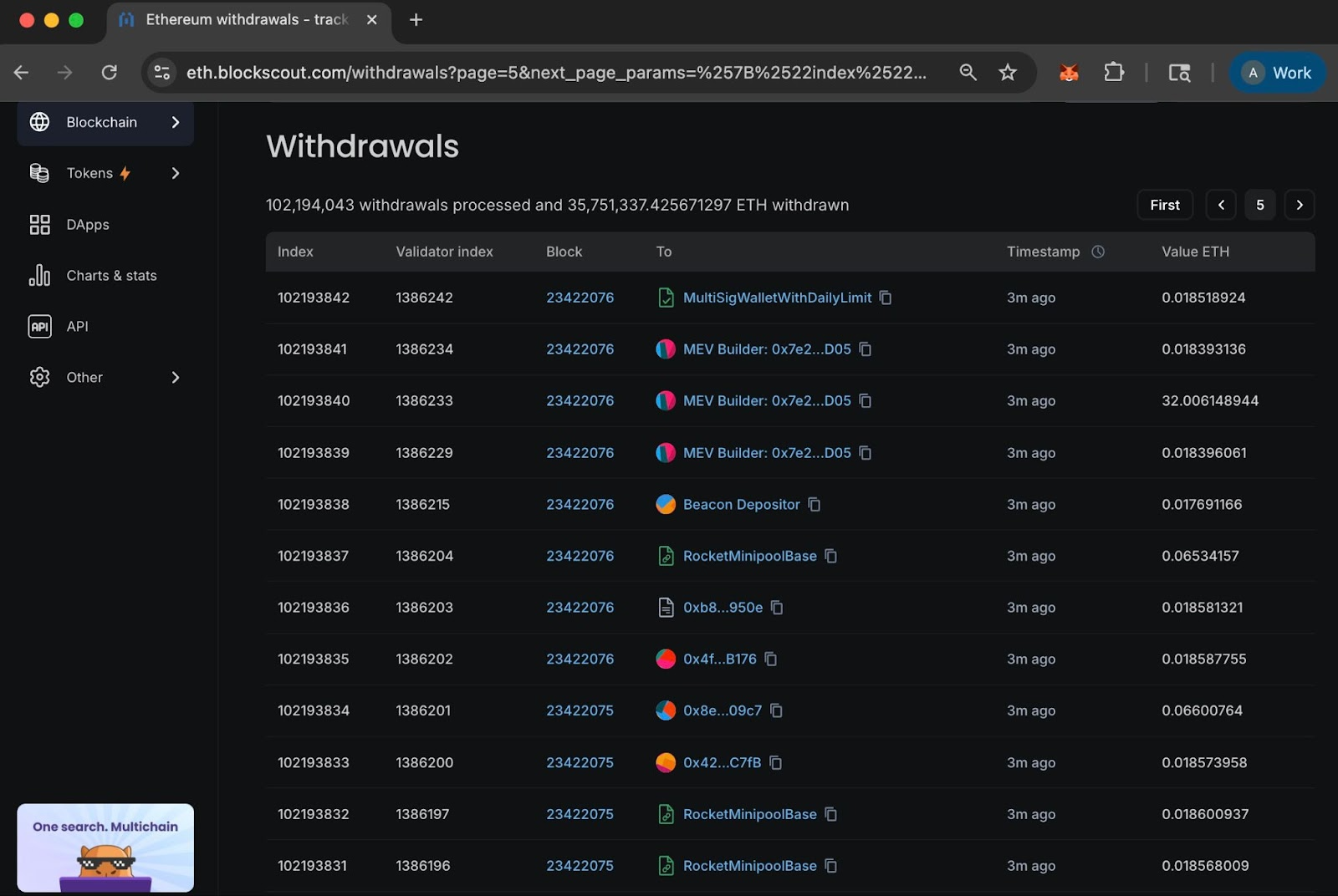Ethereum Staking After Pectra: Understanding Execution Layer Deposits and Withdrawals

Intro
It’s been nearly 5 years since the first Beacon chain block, and in that time Ethereum has completely transitioned from Proof of Work (PoW) to Proof of Stake (PoS) consensus. The transition has been incremental, with various upgrades enabling staking functionality, instantiating validator withdrawals, and much more.
The Pectra upgrade this year introduced features designed to further improve the staking process. EIP-7251 is one of the most visible, increasing the staking max from 32 ETH up to 2048 ETH per validator.
However, several other EIPs may impact validators more directly as deposit (EIP-6110) and withdrawal (EIP-7002) functionality moves to the execution layer, increasing speed, security and convenience for validators entering or exiting the chain. To enable these processes, EIP-7685 provides the necessary framework for communication between the execution and consensus layers.
In this article we briefly summarize these 3 EIPs (EIP-7685, EIP-6110, EIP-7002) and show how the data is displayed in the Blockscout UI and via dedicated REST API endpoints. Since these staking processes have moved to the execution layer, Blockscout can provide additional transparency around deposits, withdrawals, and overall validator set status.

EIP-7685: General purpose execution layer requests
EIP-7685 creates a framework for communication between the execution and consensus layers. A field for the requests object (requests_hash) is added to the execution block header to facilitate this communication. With EIP-7685 in place, contracts can send direct requests to the consensus layer, improving efficiency, standardizing the request process, and allowing for additional functionality. This mechanism is used to support EIP-7251, EIP-6110 and EIP 7002, and provides flexibility for future protocol upgrades.

EIP-6110: Supply validator deposits on chain
Prior to the EIP-6110 implementation, validator deposits were processed through the Execution Layer - Consensus Layer bridge. Once block proposers on the consensus layer received deposit data from the execution layer, a lengthy voting process (which could take up to 13 hours) determined the deposit contract state and confirmed the deposit. This process was complicated, time-consuming, and subject to potential security issues. EIP-6110 reduces complexity significantly by moving deposit processing to the execution layer. Deposits are now processed via the deposit contract log events in the same block where they appear, and deposit contract snapshots and beacon chain voting are no longer required. A deposit can be completed in 13 minutes instead of 13 hours!

EIP-7002: Execution layer triggerable withdrawals
EIP-7002 allows validators to initiate withdrawals and exits using only their execution layer withdrawal key. Ethereum validators have 2 keys, an active key (A BLS key used on the consensus layer for signing) and a withdrawal key (BLS or 0x) which owns the staked ETH. Previously, an exit or withdrawal needed to be initiated first with the active key on the consensus layer. This led to potential issues when validators and ETH owners were different entities (for example with liquid staking protocols) and limited types of functionality like programmatic withdrawals. Now, an exit can be performed on the execution layer by the ETH owner with a single key. EIP-7002 uses the WithdrawalRequestPredeploy contract, a GEAS predeploy contract verified by Blockscout.
Exploring Deposits and Withdrawals
With the latest updates, Blockscout supports views for both deposits to and withdrawals from the Beacon chain.
Deposits
Beacon chain deposits are sent to the deposit contract by individuals or groups who wish to become validators on the Beacon Chain. With Pectra, users can now send additional top-up deposits (Minimum 1 ETH) to increase their stake on a validator. We may see more high-value deposits in the future, however, most deposits into the beacon chain are still 32 ETH, the minimum required to run a validator.
Deposits are indexed from events on the DEPOSIT_CONTRACT_ADDRESS. A dedicated endpoint (/api/v2/beacon/deposits) serves this information to the Blockscout UI and is accessible to any users who need this information.
Initially, deposits are marked as either Pending or Invalid. At the beginning of each beacon chain epoch (approximately every 6.4 minutes), deposit status is fetched from the beacon chain. Current pending deposits that have no matching entries in the beacon chain queue are then marked as completed.
Deposit information includes:
- Transaction Hash - The unique transaction identifier from the execution layer where the deposit originated.
- Block - The block number in which the deposit transaction was included.
- Timestamp - The time elapsed since the deposit was initiated. The clock icon is used to toggle between relative time, date, and exact timestamp formats.
- Value ETH - The amount of ETH deposited for the validator.
- From - The address that initiated the deposit transaction. When available, the contract name is displayed instead of the raw address.
- Pubkey - The validator's public key, linked to the corresponding validator profile on the beacon chain.
- Signature - The validator's BLS signature, which serves as cryptographic proof that the validator controls the associated private signing key.
- Status - The current state of the deposit on the Beacon chain, which can be Completed, Pending, or Invalid.

Withdrawals
Beacon chain withdrawals take two forms:
- Partial withdrawals - Withdrawals of funds (typically staking rewards) that exceed the 32 ETH balance. Partial consolidated withdrawals can also be processed on the execution layer by validators who hold more than 32 ETH. Withdrawals can be programmatically initiated or processed manually by a validator.
- Full withdrawals - Complete validator exits from the protocol that return the entire staked balance (at least 32 ETH plus any accumulated rewards or additional deposits).
With EIP-7002, withdrawals can be triggered via smart contract methods directly on the EVM, allowing for fast access to liquidity and regular rewards for stakers.
The withdrawal page on Blockscout includes:
- Index - A sequential identifier for each withdrawal. Starting at 0, the index increases by one for each subsequent withdrawal.
- Validator Index - The unique identifier of the validator on the beacon chain from which funds are being withdrawn.
- Block - The block number in which the withdrawal was executed.
- To - The execution layer ETH address that receives the withdrawn funds. Blockscout shows the named contract when it exists, which helps with a high-level overview of pools processing many individual withdrawals.
- Timestamp - The time elapsed since the withdrawal was processed. The clock icon is used to toggle between relative time, date, and exact timestamp formats.
- Value - The amount of ETH being withdrawn and transferred to the recipient address.

Conclusion
The Pectra upgrade represents a significant milestone in Ethereum's ongoing evolution, fundamentally changing how validators interact with the network. By moving deposit and withdrawal processes to the execution layer through EIPs 6110 and 7002, staking is now more accessible and flexible for everyone from individual validators to large liquid staking protocols.
As the Ethereum protocol matures, infra tools must also evolve. Blockchain explorers like Blockscout are no longer just transaction viewers or receipt providers, they are essential infrastructure for monitoring validator operations, tracking staking flows, and providing transparency into consensus <-> execution layer activities. With each upgrade to the protocol, explorers play an increasingly critical role in making complex blockchain interactions understandable and accessible to users at all technical levels.

